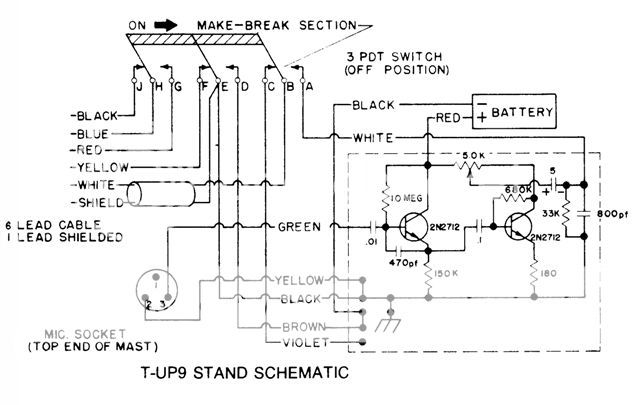Light years away from 1 and 2 transistor, single sided boards typically found in the base of D104s.

Looks like some sort of multilayer board from the 70's or 80's. Maybe an audio processor of some sort, with at least 4 IC's a few transistors and .1" spacing connectors. The connectors alone make me think its not original to the mic. What type of connector is on the end of the mic cord?
Good luck, I'm genuinely interested in the results of this quest.
Mike



